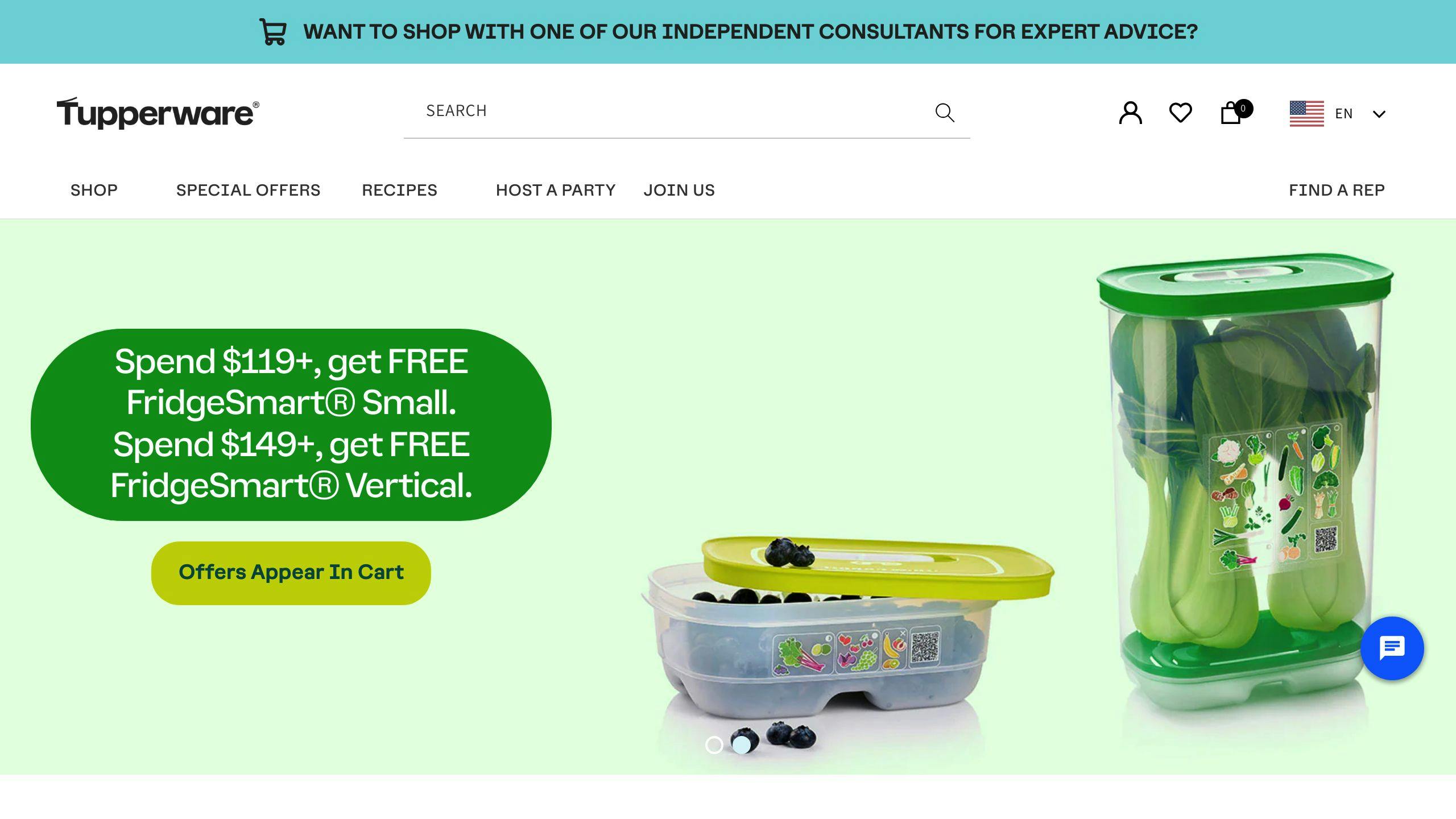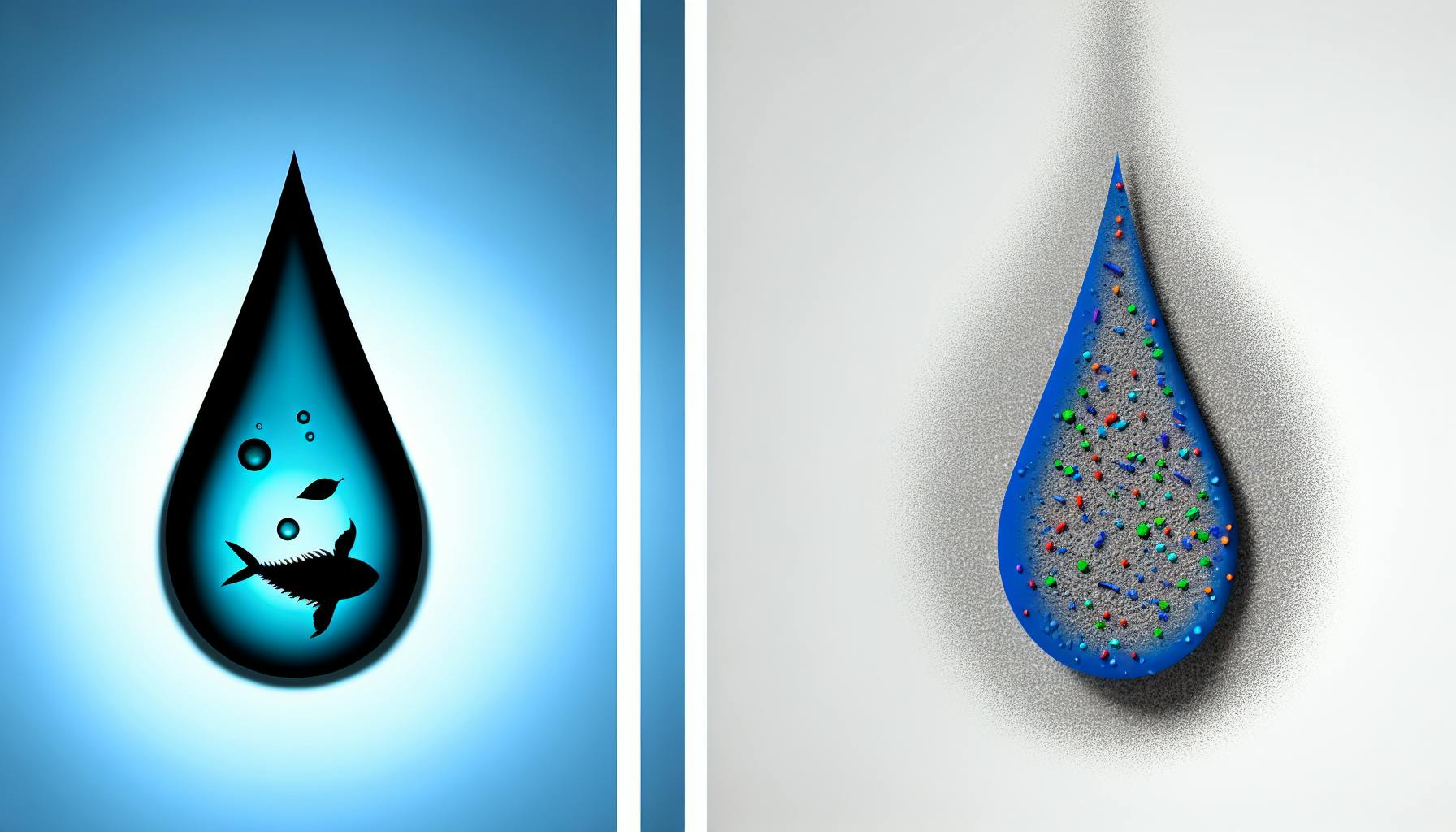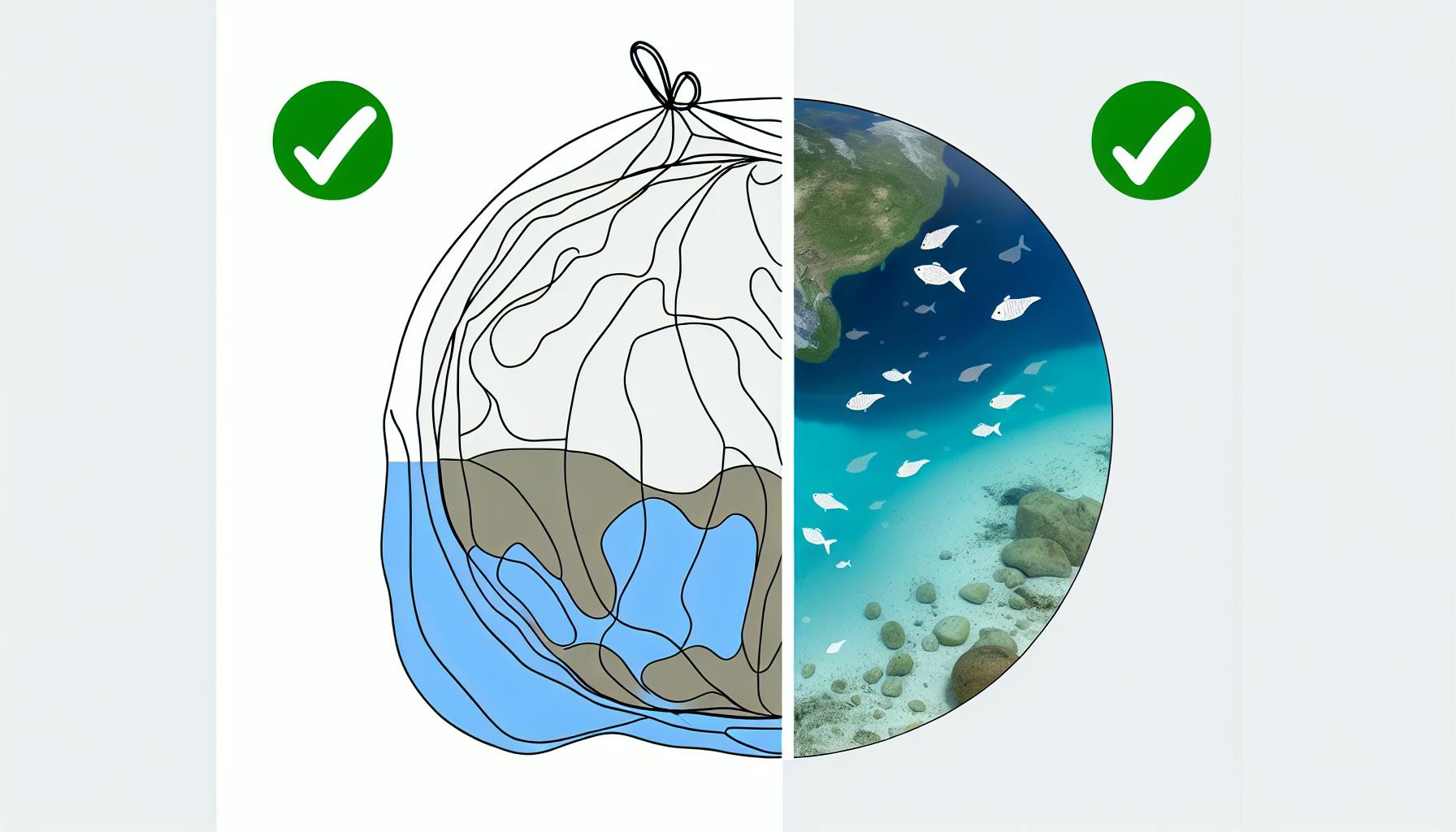Plastic food containers like Tupperware can release tiny plastic particles called microplastics into our food and drinks. The amount released depends on factors like age, wear and tear, and exposure to high heat. While Tupperware is a trusted brand using durable plastics, all plastic containers have the potential to leach microplastics over time.
To reduce exposure to microplastics:
- Switch to safer options like glass, stainless steel, or silicone containers whenever possible
- If using plastic containers:
- Avoid heating or microwaving plastic
- Replace heavily scratched, cracked, or old containers
- Hand-wash instead of using the dishwasher
- Adopt eco-friendly practices:
- Use reusable containers
- Try beeswax wraps or silicone lids instead of plastic wrap
- Minimize single-use plastics
The growing concern over microplastic contamination highlights the need for mindful choices. By being aware of our food storage practices and embracing sustainable alternatives, we can reduce our exposure to potential health risks and contribute to a cleaner environment for future generations.
Related video from YouTube
Container Material Alternatives
| Material | Advantages | Drawbacks |
|---|---|---|
| Glass | Non-toxic, durable, easy to clean | Heavy, can break |
| Stainless Steel | Durable, stain-resistant | More costly, may react with some foods |
| Silicone | Lightweight, flexible | Long-term safety unclear, less heat-resistant |
Microplastics in Food Storage
Where They Come From
Plastic food containers are a major source of microplastic contamination in our food and drinks. Over time, these containers break down and release tiny plastic particles. This process speeds up when you heat or microwave the containers, causing the plastic to degrade faster and leak microplastics into the stored food or liquids.
Even brand new plastic containers can release microplastics. One study found that new plastic containers shed an average of 12-38 mg of microplastics per pack, with particles in various shapes like cubes, spheres, rods, and irregular forms. These particles can easily end up in our meals when we store or reheat food in these containers.
Potential Health Effects
As we consume microplastic-contaminated food and water, these tiny plastic particles build up in our bodies, potentially leading to health issues. Microplastics have been linked to disrupting gut bacteria, weakening the immune system, and contributing to overall toxicity.
Many of the chemicals used in plastic production, such as bisphenol A (BPA), phthalates, and dioxins, are classified as toxic and can leach into food from the containers. These chemicals can mimic hormones in our bodies, disrupting their natural functions and increasing the risk of chronic conditions like reproductive issues, metabolic disorders, and even cancer.
Furthermore, microplastics can act as carriers for other harmful pollutants and pathogens, potentially exacerbating their negative impacts on human health. With their ability to accumulate in tissues and organs, the long-term effects of microplastic exposure are still being studied but are a growing concern for public health.
| Microplastic Sources | Potential Health Risks |
|---|---|
| Plastic food containers | Disruption of gut bacteria |
| Degradation of larger plastics | Weakened immune system |
| Air, water, and food contamination | Accumulation of toxins in body tissues |
| Increased risk of chronic conditions |
Tupperware Containers Examined

About Tupperware
Tupperware is a well-known brand that makes plastic food storage containers. The company started in 1946 and first used polyethylene plastic to make its iconic "burping" seal containers. Over time, Tupperware expanded its product line, using materials like polypropylene and other food-grade plastics to create various storage solutions.
Research Findings
Several studies have looked at whether plastic food containers, including Tupperware products, release microplastics. A recent study analyzed microplastic release from various plastic containers, like Tupperware, under different usage conditions. The findings showed that microplastics and nanoplastics could be released from these containers, with the release rates varying depending on factors like heating, storage duration, and container material.
In one study, researchers found that microwaving plastic baby food containers and pouches could release billions of nanoplastics and millions of microplastics per square centimeter of container surface area. Additionally, refrigerating and storing at room temperature for over six months also resulted in the release of significant amounts of microplastics and nanoplastics into the stored food.
Factors Affecting Release
Several factors can influence the release of microplastics from Tupperware containers:
-
Heating and Microwaving: Exposing plastic containers to high temperatures, such as microwaving or dishwashing, can speed up the breakdown of the plastic material, leading to increased microplastic release.
-
Storage Duration: Storing food or liquids for longer periods, especially at higher temperatures, can contribute to the breakdown of plastic containers and the subsequent release of microplastics into the stored items.
-
Container Material: The specific type of plastic used in the container can affect how easily it breaks down and releases microplastics. Polypropylene and polyethylene, commonly used in Tupperware products, may release microplastics at different rates under various conditions.
-
Age and Condition: Older or heavily used plastic containers are more likely to break down and release microplastics compared to newer or well-maintained containers.
While Tupperware containers are designed to be durable and reusable, the potential release of microplastics remains a concern, especially with prolonged use, exposure to high temperatures, and improper storage conditions.
| Factor | Impact on Microplastic Release |
|---|---|
| Heating and Microwaving | Accelerates plastic breakdown and increases release |
| Storage Duration | Longer storage times, especially at higher temperatures, can lead to more release |
| Container Material | Different plastics like polypropylene and polyethylene may release at varying rates |
| Age and Condition | Older or heavily used containers are more prone to breaking down and releasing microplastics |
sbb-itb-1dc3f59
Safer Options for Food Storage
Alternatives to Plastic Containers
With concerns about microplastics from plastic food containers, it's wise to explore safer options. Here's a comparison:
Table: Container Material Alternatives
| Material | Advantages | Drawbacks |
|---|---|---|
| Glass | Non-toxic, durable, easy to clean | Heavy, can break |
| Stainless Steel | Durable, stain-resistant | More costly, may react with some foods |
| Silicone | Lightweight, flexible | Long-term safety unclear, less heat-resistant |
Glass containers are a popular choice as they are inert and easy to clean. They can withstand high temperatures and are dishwasher-safe. However, glass is heavier and more prone to breaking than plastic.
Stainless steel is durable and won't leach chemicals into food. It resists staining and odors but can be more expensive than plastic or glass. Some acidic foods may react with stainless steel over time.
Silicone containers are lightweight and flexible, but their long-term safety is still being studied. They may not be as heat-resistant as glass or stainless steel.
Safe Use and Storage Tips
While transitioning to safer alternatives, it's still important to use plastic containers properly to minimize microplastic release:
- Avoid heating or microwaving plastic containers, as high temperatures can cause them to break down faster.
- Replace heavily scratched, cracked, or aged plastic containers, as they are more likely to release microplastics.
- Follow manufacturer guidelines for safe usage and storage temperatures.
- Hand-wash plastic containers instead of using the dishwasher when possible.
It's generally recommended to replace plastic containers every few years, even with proper care.
Sustainable Lifestyle Changes
To further reduce reliance on single-use plastics and minimize microplastic exposure, consider adopting these practices:
- Bring reusable containers for restaurant leftovers or takeout.
- Store dry goods like grains, nuts, and snacks in glass jars or reusable bags.
- Use beeswax wraps or silicone lids instead of plastic wrap or bags for food storage.
- Choose products with minimal or recyclable packaging when possible.
- Support companies that prioritize sustainability and offer eco-friendly alternatives.
Conclusion
Key Points
- Plastic food containers like Tupperware can release tiny plastic particles called microplastics into our food and drinks.
- The amount of microplastics released depends on factors like age, wear and tear, and exposure to high heat.
- While Tupperware is a trusted brand using durable plastics, all plastic containers have the potential to leach microplastics over time.
What to Do
- Switch to safer options like glass, stainless steel, or silicone containers whenever possible.
- If using plastic containers, follow these tips:
- Avoid heating or microwaving plastic
- Replace heavily scratched, cracked, or old containers
- Hand-wash instead of using the dishwasher
- Adopt eco-friendly practices:
- Use reusable containers
- Try beeswax wraps or silicone lids instead of plastic wrap
- Minimize single-use plastics
Call to Action
The growing concern over microplastic contamination highlights the need for mindful choices. By being aware of our food storage practices and embracing sustainable alternatives, we can reduce our exposure to potential health risks and contribute to a cleaner environment for future generations.
FAQs
Do all plastic containers release tiny plastic bits?
Not every plastic container leaks tiny plastic pieces called microplastics, but the risk exists for most types used to store food. This includes containers made from:
- Polypropylene
- Polyethylene
- Polystyrene
The amount of microplastics released tends to increase as the container:
- Gets older
- Shows signs of wear and tear
- Is exposed to heat
- Stores acidic or fatty foods
To lower your exposure, it's best to replace old, scratched, or damaged plastic containers with safer options like glass or stainless steel.
Should I get rid of my old Tupperware?
While Tupperware is a trusted brand known for using durable plastics, all plastic containers can potentially release microplastics over time, especially when:
- Exposed to heat
- Used for an extended period
It's generally recommended to discard Tupperware containers that are:
- Heavily scratched
- Cracked
- Stained
- Over 5-10 years old
Replace them with safer options like glass, ceramic, or stainless steel containers to reduce your exposure to microplastics and other potentially harmful chemicals.
| Plastic Container Risks | Safer Alternatives |
|---|---|
| Release microplastics over time | Glass containers |
| Increased leaching with heat exposure | Ceramic containers |
| Potential chemical leaching | Stainless steel containers |


